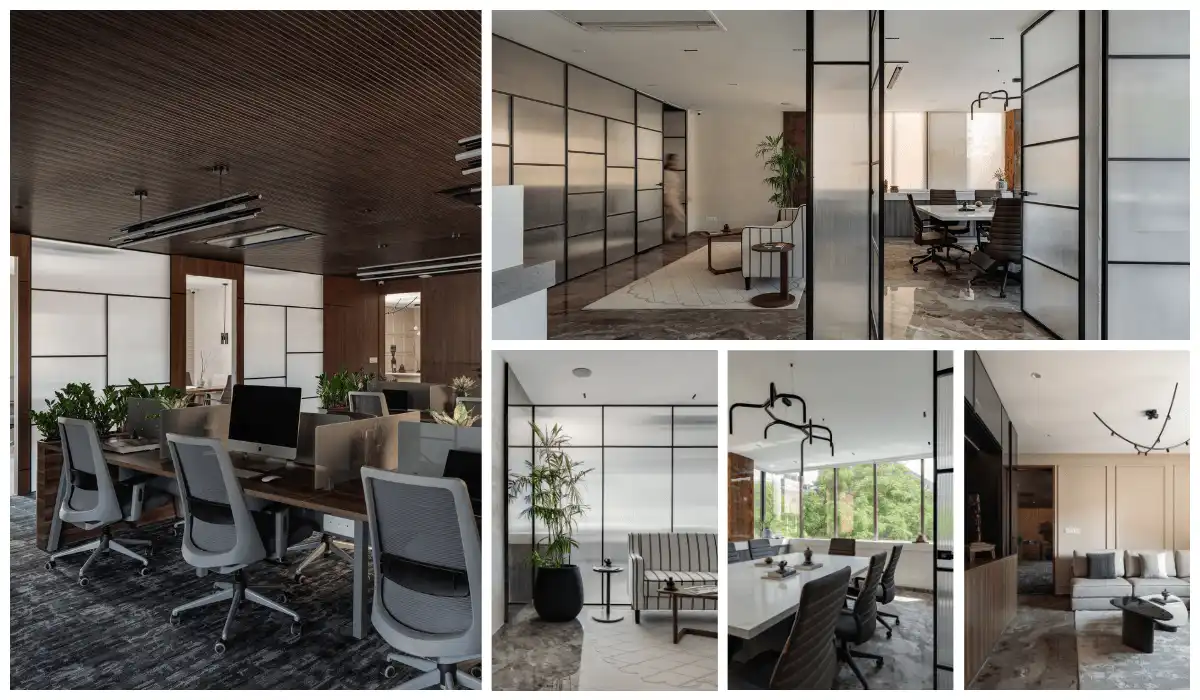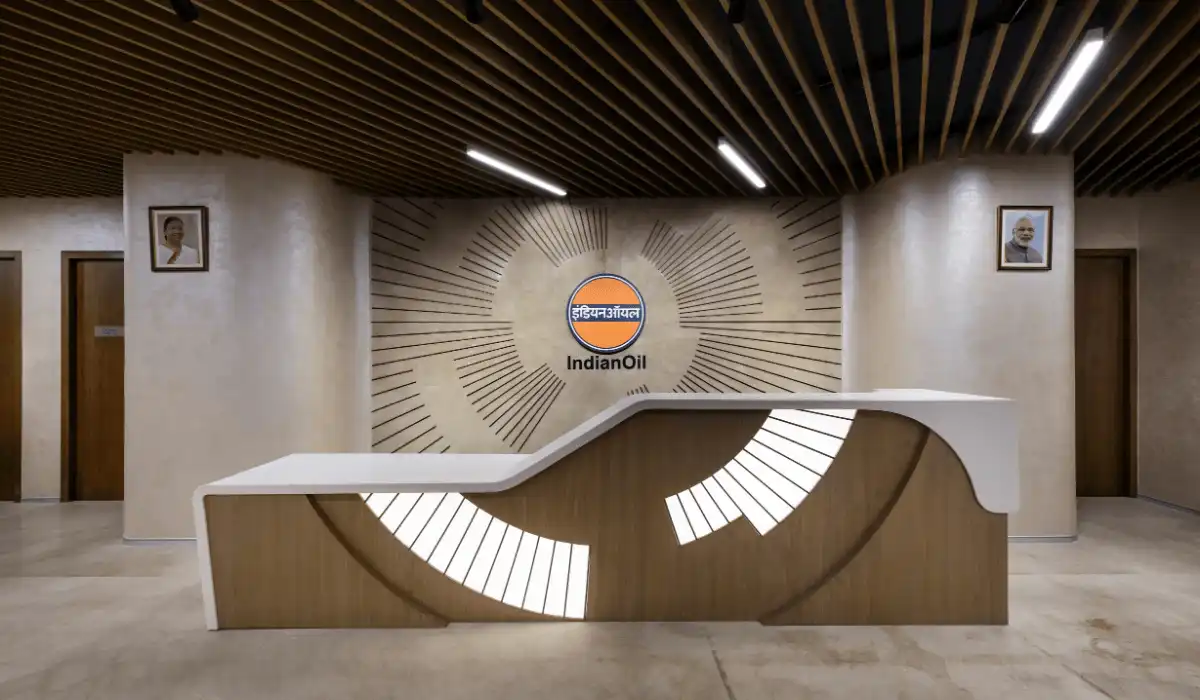The Sainik School narrates tales of patriotism through a disciplined, holistic and clean design approach. Proposed at the historical and cultural node of Uttar Pradesh- Gorakhpur, the Sainik School is an administrative facility that will provide military training to students aspiring to join Indian Armed Forces. Design Forum International‘s principal architect Anand Sharma and architect Chanchal Jain designed the educational institute. It is envisaged on a land parcel of 50 acres for academic and residential zones. Adhering to the ethos of the Indian Armed Forces, the school manifests discipline, linearity and a clean design.
Design Concept and Site Analysis
A public roadway divides the proposed luscious green site, splitting the entire land into two pockets of 14 acres and 36 acres for distinct functions. The school offers students admissions in 6th and 9th standard to undergo formal training along with regular studies. The built volumes named after the revolutionaries of India are emblematic of the valour of Indian Freedom fighters. In the academic zone, the Sainik School accommodates the Maharana Pratap academic block, Chhatrapati Shivaji auditorium, Maharaja Ranjit Singh multi-purpose hall. The residential zone houses Bhagat Singh Chhatravas, Rajguru Chhatravas, Sukhdev Chhatravas, and the Lala Lajpat Rai Bhojan Kaksh.

Design Philosophy
The Indian armed forces carry a disciplinary order, leading to clear, robust access and systematic linearity in the layout of public buildings. To achieve a stark approach, the design utilises the longest available length to create a visual axis, with all building elements aligned to it. The design incorporates a ceremonial plaza at the juncture of the public road and longitudinal visual axis.
Considering order and symmetry as a dominant feature of the design, the primary built volumes at the academic zone – the academic block, auditorium, multi-purpose hall and the residential zone – dining hall, girls hostel, boys hostel, follow a replicating fashion in their orientation on both sides of the central plaza. Marked as a commemoration area for the Indian Armed Forces, the central plaza functions as an avenue for scholars to reach the academic block. Memorabilia that celebrate the Forces’ victories, valour and conquests lined the central plaza to boost inspiration and rigour in aspiring students.
Construction Technology and Spatial Organisation
Sports facilities play a crucial part of an army school upbringing. The design team places these sports facilities in close proximity to the academic block. Planned to remain secluded from public view, they offer privacy and negate the hustle and bustle of the thoroughfare. The staff quarters are located near the hostel blocks to serve as a guiding influence for young students throughout their training and stay at the Sainik School. The design of the built incorporate modern forms with a design vocabulary of colonial architecture and a flavour of heritage. With structural considerations like constructibility, stability, durability, economy and availability of materials, the designers adopted a conventional beam-slab system that follows the applicable building codes and standards. Ease of maintenance and attaining the desired aesthetics has also been an essential factor.


Climate Conscious Design
The design devises the services at Sainik School with the objectives of energy efficiency, green building, eco-friendly design, and centralised location of service installation to ensure easy maintenance, state of the art technology, fast track installation and compliance to all statutory regulations. An efficient sanitation system and storm-water drainage system, adept energy-saving equipment and a well-networked water supply line with provisions for static storage tanks have been incorporated into the design. Hydro-pneumatic systems with automatic electronic level controllers channelize the water. The induced HVAC system design to equips the project with energy conservation features. This in turn reduces the overall energy demand of the building and minimize operating costs.
Infrastructure and Utilities
Solar energy powers the lighting in the outdoor areas. These include roads, LED street lights, landscape lights, building facade illumination and water heaters. The timer-based lighting control is economical and reduces energy consumption. Multifunctional lights powered by solar panels house the digitally equipped CCTV cameras and signage. They also power the attached smart bins at their feet. Features like rain-water harvesting, fire- fighting and smoke extraction systems further present a well-thought approach to the serviceability of design. The design team incorporated segregated circulation paths for vehicular and pedestrian access. The planning incorporates smart waste management systems and infrastructure like Wi-Fi enabled green parks, toilets, kiosks and billboards. Facilities for jogging, walking, sports, yoga and meditation have been provided to promote a healthy lifestyle. The design team added numerous trees and plantations to reduce noise and air pollution. Cycling zones with smart mobility features further help in reducing pollution levels.
Landscape Design
The proposed design for Sainik School plans on retaining maximum number of trees existing within the site. Planning of the phases of construction are in accordance to the density of existing greenery. With a smart horticulture plan, the entire site’s landscape connects with a drip irrigation system. The site also includes ceremonial gardens. These features suggest a sustainable and eco-friendly building approach. Sprinkled throughout the site’s public spaces and open parks are many similar urban adjuncts. These urban adjuncts direct us towards DFI’s holistic design ideology.

DFI envisioned the architectural vocabulary of Sainik School, Gorakhpur to narrate the tales of patriotism history has blessed us with. Through this institute, they attempt to curate a holistic built environment. Such an environment inspires the students to embark on their journey towards nationalism by joining the Indian Armed forces. Amidst serene and sustainable built forms and nestled nature’s lap further enriches the students, preparing them to take on the world.
Design Forum International (DFI)
Visit: www.designforuminternational.com
Email: info@dfiarch.com
Contact: + 91 11 – 46556600
Biltrax Construction Data is tracking 17000+ projects on its technology platform for its Clients. Email contact@biltrax.com to subscribe and generate business leads.
Discover more from Biltrax Media, A Biltrax Group venture
Subscribe to get the latest posts sent to your email.




























